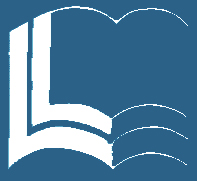AITSINGER (EYZINGER), Michael von. - Novus de Leone Belgico eiusq topographia atq. Historica descriptione liber (…). Rerumque in Belgio maxime gestarum, inde ab anno Christi M.D.LIX. Usque ad annum M.D.LXXXVII perpetua narratione continatus.
 Click on image to zoom
Click on image to zoom

AITSINGER (EYZINGER), Michael von. - Novus de Leone Belgico eiusq topographia atq. Historica descriptione liber (…). Rerumque in Belgio maxime gestarum, inde ab anno Christi M.D.LIX. Usque ad annum M.D.LXXXVII perpetua narratione continatus.
Description
ENLARGED EDITION, with 207 (of 208) engravings of a famous eyewitness account of the Dutch Revolt, with the famous "Leo Belgicus" map, here in its second state. One of the major sources for the history of the Low Countries during the beginning of their struggle for independence. This history of the religious wars in Belgium and Holland from 1559-87 is illustrated with Hogenberg's engravings (from his "Geschichtsblättern"), whereby the engravings for this edition were printed without the lower text panel and have Latin text on the reverse. They mostly show siege scenes of the most important cities in the Netherlands, e.g. Alkmaar, Amsterdam, Antwerp, Bergen op Zoom, Breda, Brussels, Haarlem, Leiden, Maastricht, Mechelen, Middelburg, Rotterdam, Utrecht, Zuthphen and some from France.
The Australian author Michael Aitsinger (1530 ?-1598 ?) followed the tradition of 'newsletters' published on the occasion of the regular trade-fairs, began to issue a series of half-yearly publications. This work, written with unusual impartiality for the time, was repeatedly updated and reprinted. Aitsinger witnessed the execution of Egmont and Hoorn and became a partisan historian of the Dutch Revolt. The fame of the book owes much to the 208 fine engravings by Frans Hogenberg (1536-1590) which depict many places and historical events in the Netherlands and Germany with great reliability.
The splendid "Leo Belgicus" i.e. folding engr. map of the Low Countries as a lion became a symbol of the unity and strength of the 17 Provinces was the prototype for numerous similar maps up to the beginning of the 19th century, is here present in its second state with the name of Elisabeth (of Valois) added.
The Australian author Michael Aitsinger (1530 ?-1598 ?) followed the tradition of 'newsletters' published on the occasion of the regular trade-fairs, began to issue a series of half-yearly publications. This work, written with unusual impartiality for the time, was repeatedly updated and reprinted. Aitsinger witnessed the execution of Egmont and Hoorn and became a partisan historian of the Dutch Revolt. The fame of the book owes much to the 208 fine engravings by Frans Hogenberg (1536-1590) which depict many places and historical events in the Netherlands and Germany with great reliability.
The splendid "Leo Belgicus" i.e. folding engr. map of the Low Countries as a lion became a symbol of the unity and strength of the 17 Provinces was the prototype for numerous similar maps up to the beginning of the 19th century, is here present in its second state with the name of Elisabeth (of Valois) added.
39,000€
- Reference N°: 48778
